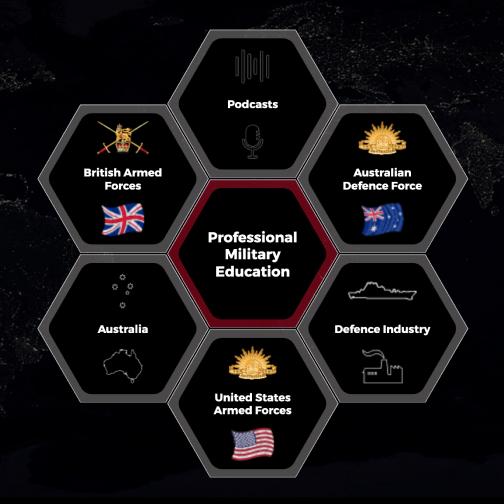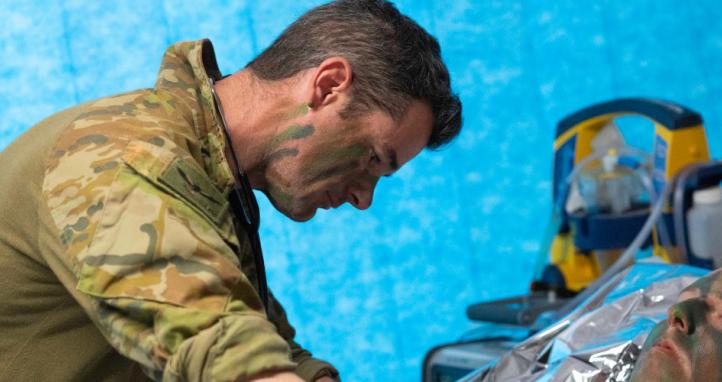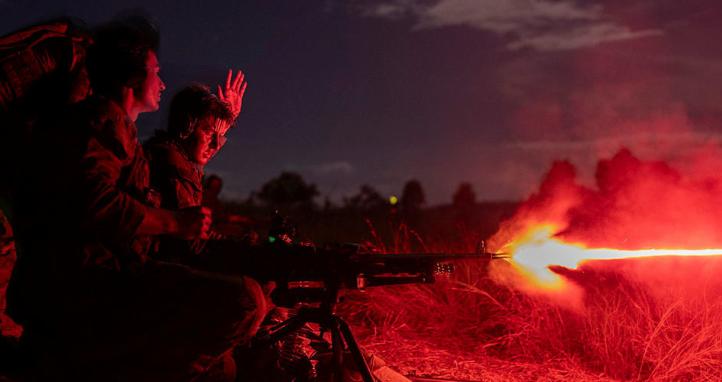Stress Changes Our Physiology
The brain is the body’s most complex organ. This is because it contains the mechanisms required to balance psychological and physiological needs in real time while responding to the world around us. In order to do so, the brain is constantly receiving external signals from the environment, and internal signals from our bodies. Unfortunately, these mechanisms have not evolved to match the complexities of the world around us, and this can result in a mismatch between biological drives and real-world needs.
Specifically, the human stress response evolved to deal with acute, fleeting stressors that imminently impact our physical survival – an earthquake, an animal attack, a kinetic engagement. What this means is that we have strong neural pathways that activate a physiological response (AKA ‘get your blood up’) to help us to survive. Very broadly, this looks like:
- We perceive threat – stress response is activated.
- Brain releases ‘survival’ chemicals which increase heart rate, dilate pupils, slow down digestion, provide surge of adrenaline, etc.
- Body enacts one of ‘fight, flight, freeze’ mode – the body is theorised to activate the response it assesses as most likely to result in survival.
- Threat dissipates – switch to ‘rest and digest’ mode.
- Body relaxes – heart rate slows, digestion starts again, cortisol and adrenaline drop quickly thus fatigue fills body (strong physiological imperative to rest).
Importantly, the body’s stress response can only be sustained for a finite amount of time – even if the threat remains present, the body will eventually try to ‘shut down’ due to the biological cost of running the system at ‘high revs’. This shut down point brings on symptoms many people recognise as ‘burn out’.
Activation of Fight/Flight Impacts Learning and Complex Thinking
While these processes work well at preparing the body for ‘one and done’ physical threat, they did not evolve to deal with the cumulative stressors of modern life. A highly activated stress response is helpful for quick identification of physical threat but is detrimental to complex problem analysis or consideration of second and third order effects. This is not a matter of having to ‘tough it out’ – due to physiological processes, a brain that perceives insurmountable threat cannot learn, nor can it make complex decisions in novel situations.
When fight/flight/freeze activation reaches a certain point, executive function – that is, the pathways we rely on for dynamic thinking, novel ethical decision-making, and forward planning – are literally inaccessible. These pathways also shut down our capacity to appropriately integrate information in a manner that allows memory to function as normal.
What this means is that it is not only impossible to stress someone into learning or making consistently good decisions in dynamic environments, it is possible to stress someone out of good decisions and into forgetting, or relying on automatic processes even when these are inappropriate for the situation at hand. Learning encompasses not just memorising but also applying information in new circumstances. This is what we call ‘cognitive flexibility’.
Cognitive flexibility is part of executive function and so is lost once a certain stress threshold is reached. As such, cognitive flexibility can only be used when an individual is in the appropriate physiological state. Noting the potential stress inherent in routine aspects of our roles, this naturally poses the question – how does any fighting force get anything done if this mechanism is so cut and dry?
Fortunately, it is possible for someone in a high threat environment to remain in the appropriate physiological state for learning to occur, including analysing existing knowledge to apply it to a new situation, provided they have adequate strategies for managing their reactions. This is because it is not as simple as “X event causes distress”, but rather “X event causes distress if my brain doesn’t feel equipped for it”. Some level of physiological arousal is necessary – without it, we wouldn’t care enough to be bothered doing anything at all. As such, we want to aim for the ‘sweet spot’ of physiological arousal – where we experience drive, motivation, and urgency while still allowing for complex decision-making.
Keeping our Teams in the Sweet Spot
We don’t solely rely on external messages (sight/sound/smell/touch/temperature/etc) to assess threat, we also rely on internal messages. These are what we believe about the external events, and what we say to ourselves. These internal messages can change how our body responds to the situation. What this means is that unfortunately, our brain can trigger a high level threat response even in the absence of a high level threat. Fortunately, our brain can use both physiological and cognitive regulation strategies to manage our threat reaction and so remain relatively calm even in a highly taxing and dangerous environment.
Everyone is capable of shifting their reactions, but we have to choose to do it. Most of us will have pre-established ‘self-talk’ to assist in this space, or without realising it, will naturally do things that reduce physiological stress to a more adaptive level (taking three deep breaths, making time to eat). However, many people also inadvertently do things that increase their level of physiological activation – who among us hasn’t drank too much caffeine to get an urgent task done, then wondered why our heart was beating out of our chest?
Sometimes we will have lived this with a leader who believes they manage stress well, but who will reach a higher than helpful level of physiological arousal during an exercise and inadvertently hold themselves there throughout, with negative flow-on effects for decision making and communication. On the other hand, perhaps we have seen this in our teams – the mate who focuses on criticism or blame when things go wrong, rather than how to course correct.
This is where leaders (both formal and informal) can provide guidance or ask ‘the right questions’ to facilitate more adaptive responses, including:
- “Meet them where they’re at”:
- If you remain observant, you can match your approach to their physiological state. Remember that if someone is appearing overwhelmed (which can look like many things, including anger, fear or sadness), it is more effective to provide them with feedback of smaller chunks of information that can be acted upon.
- Provide evidence of why they are capable of what is being asked:
- If they are in a negative self-talk spiral, reminders of the ways in which they are prepared for this event may assist them to engage their own realistic self-talk, which will reduce stress to more adaptive levels.
- Make sure physiological needs are met wherever possible – rest when able, eat when able, remain hydrated. These can be difficult in highly kinetic environments, and so encouraging people to find small opportunities to reset wherever possible – or rotating higher demand roles - is beneficial to reducing physiological arousal across the capability.
It is critical to remember that keeping yourself and your team in the sweet spot is not about removing all external sources of stress, which are a necessary part of learning the skills of effective war fighting. Rather, as individuals and team members, we need to aim for having a helpful reaction to stressful events – both physically and psychologically. We must also look for opportunities to foster these reactions in others.
Just as leaders should encourage their teams to reflect on tactical decision-making, increasing their ability to self-reflect on their internal processes is also beneficial. Our teams are in general highly skilled, with a proven history of being capable of showing initiative while managing arduous circumstances. Just as we strive to be ‘fitter’ and not simply ‘at standard’, we can and should build on these skills in order to facilitate improved capacity for complex decision making in an ever-changing operational environment.









